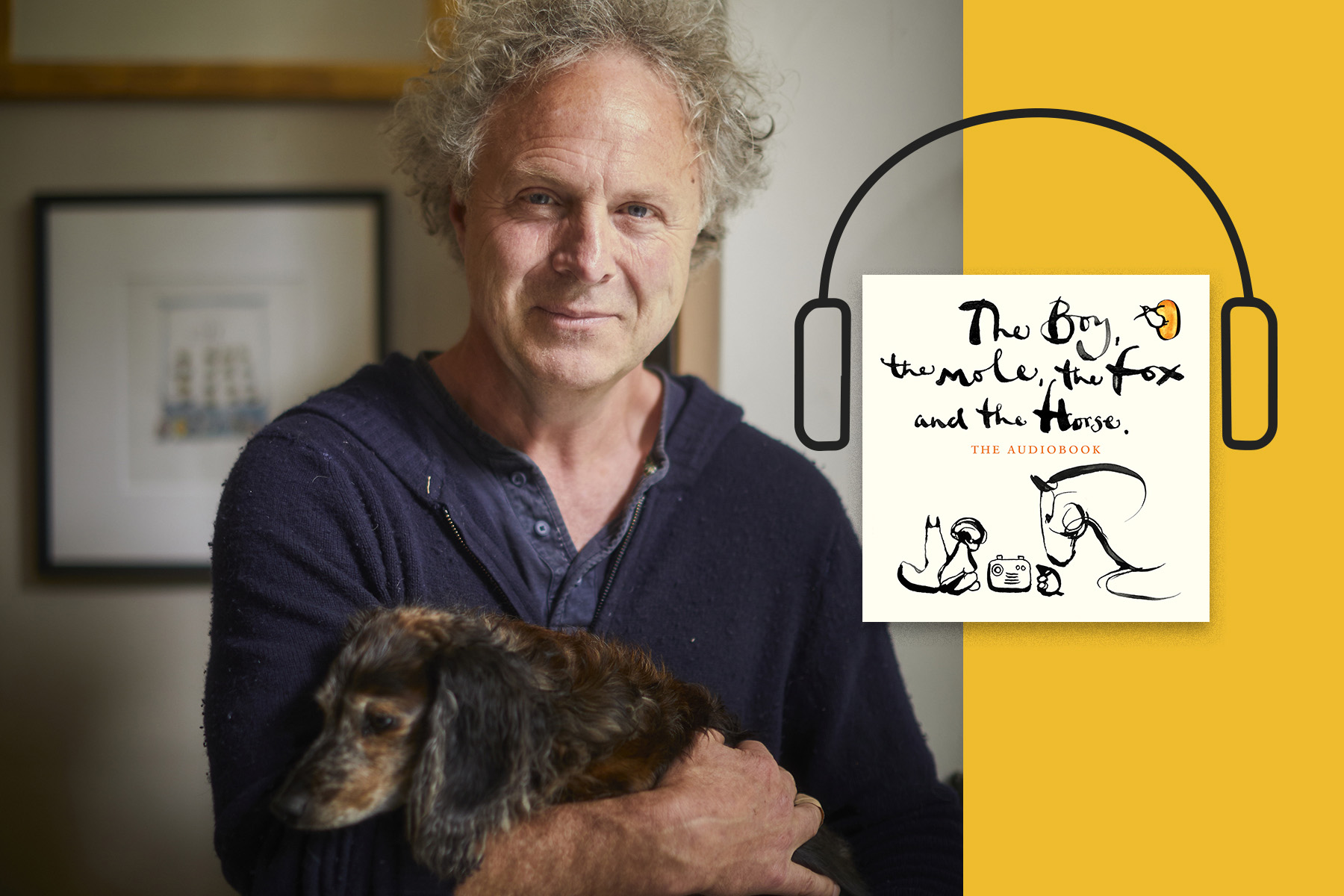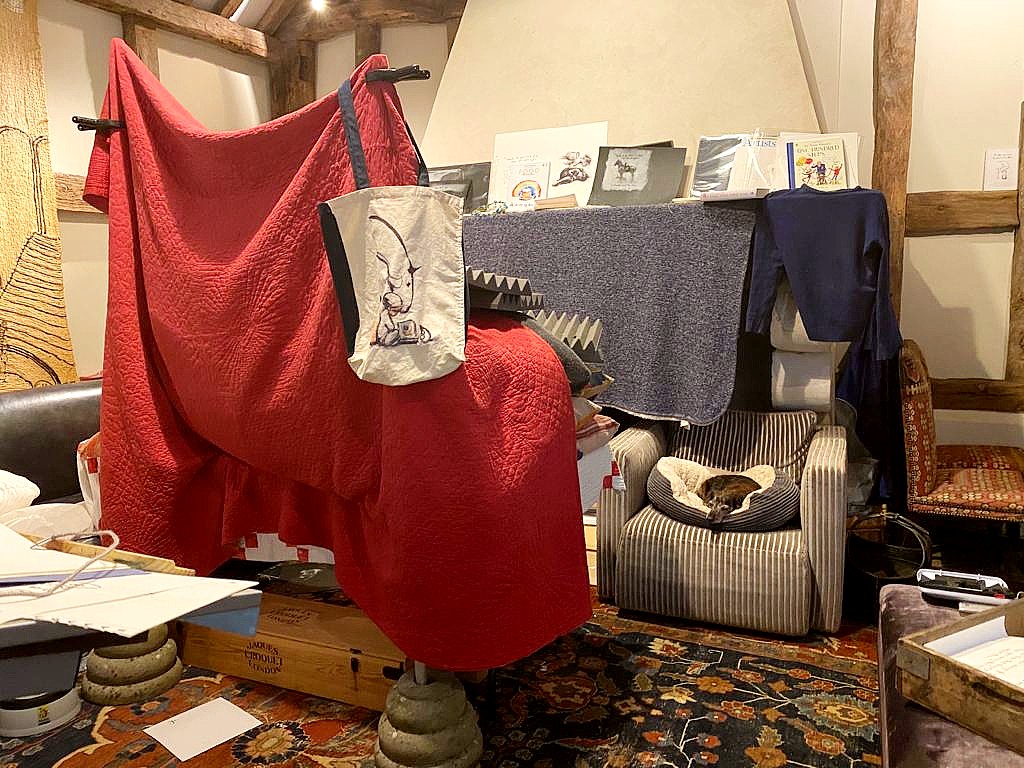
- Home |
- Search Results |
- Charlie Mackesy on turning The Boy, The Mole, The Fox and The Horse into an audiobook: ‘It’s almost meditative’
Charlie Mackesy on turning The Boy, The Mole, The Fox and The Horse into an audiobook: ‘It’s almost meditative’
How do you turn a beautiful hardback of illustrated wonderment into sound? Stephen Carlick speaks to the author of one of 2020’s bestselling books about his homely, unconventional process.
There aren’t many unused superlatives left for the “publishing phenomenon” that was Charlie Mackesy’s The Boy, The Mole, The Fox and The Horse. Just over a year on from its publication on 10 October, 2019 – the night Ebury found they needed to hire extra drivers just to keep up with deliveries of the thousands of unexpected pre-orders – Mackesy’s book of gorgeous, looping ink illustrations of his four iconic characters, who ponder gently and empathetically about life’s troubles and its small victories too, is already enjoying its 22nd printing. The book had already earned a reputation as a balm for troubled times, but the pandemic has made its comforts all the warmer.
“It’s strange isn’t it, the timing?” muses Mackesy, as warmly as his creation might suggest. “There was no sense at all of what was to come – although, in a weird way that year, I had a strange sense of foreboding, and wanted to get it out.”
One amidst many of the signs of the book’s continued importance is that less than a year after its publication, Mackesy was already turning The Boy, The Mole, The Fox and The Horse into an audiobook. That’s not at all an odd outcome for a book in 2020, but it’s almost unprecedented in the world of graphic novels and illustrated books such as Mackesy’s. How on Earth does one turn a book with so few words, and such beautiful images, into audio?
“Well,” pauses Mackesy, “I rewrote the book, really. I imagined a blind friend of mine, who’d never heard of the book, listening to it, so I tried to ‘illustrate’ it so that they could enter that world and experience it. There is no real ‘narrative’ – like the book, there’s a sort of journey they go on, but I describe the landscape and how they feel. So I really think it’s more a narrative of feeling than events; there are events, but the events come second to the interactions and feelings between the four of them.”
Aware that his images needed to be painted through words, Mackesy sought out alternatives to his native brushes and ink: in evocative added description, and auditory imagery.
“They say a picture can paint a thousand words. If you don’t have pictures, you need to find a thousand words,” he jokes, before explaining: “It’s certainly not an extra thousand words, but most of the extra words aren’t dialogue, they’re to do with description. It’s slow, too – if I just read the book out loud as it is, it would take about 15 minutes. But the way we’ve done it, there’s music and all kinds of natural sounds in it, which will space out the words. It won’t just be like someone sitting down and reading a book; it’ll be more experiential, I think – almost meditative.”
Understandably, Mackesy was nervous about handing the reins of creative work – especially a work so beloved – to somebody else, to be moulded into a new format. So, Mackesy set about building a studio.
“Because I’m in Suffolk looking after my mother, who’s 90 and very vulnerable to anything, I didn’t go to London to record it; I basically built myself a studio in the barn, which I’m in now, out of scaffolding poles, blankets, cushions. Because I’m not a techie – my skills are with paper and pens – that was the toughest bit for me: learning how to record the files, upload them, send them, rerecord. I think so far today, I’ve recorded 200 files, mostly re-recordings; I’ve never done it before, and lawn mowers, and all kinds of other noises, have made me have to start again. But it looks like something out of Professor Branestawm.”

“There’s always a risk,” admits Mackesy about adapting a work, “which is why I think I wanted to do it for myself, rather than give it to someone else. I want it to have the same spirit. I haven’t changed any of the words said in the book: I get videos sent to me from schools, and in the early days after the book I would go in and draw a picture [from the book], and they all knew the exact words that went with each picture; there was no deviation, not even an extra ‘and’. I couldn’t alter that, so all the dialogue is exactly the same.”
Mackesy opted not to alter his voice in terms of the book’s audio narration: “I try to do it in a way that’s unaffected. In the introduction, I sort of say, ‘This is me, I’m doing it, and it may not be very good, but I’ll do my best.’”
And while he’s charmed by the readings others have done of The Boy, The Mole, The Fox and The Horse, Mackesy couldn’t bring himself to alter the voices of his four characters, either: “I don’t put on voices for the characters. I just read it fairly gently.
“I never really enjoyed the chasm between a performer and an audience; I prefer a performer to sit in with the audience; we’re all the same. That’s the nature of the book, too, the spirit of the book: this idea of sitting next to someone, not performing to someone. I make comments in the audiobook about, you know, ‘When I drew this, Barney walked across it and smudged it.’ I can use the ‘I’; if someone else read the book, they couldn’t do that.”
The Boy, The Mole, The Fox and The Horse is published in audio (CD and digital download) and available now.
What did you think of this article? Let us know at editor@penguinrandomhouse.co.uk for a chance to appear in our reader’s letter page.